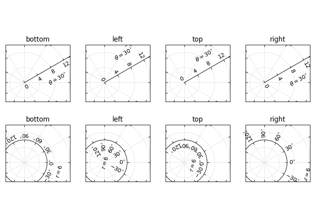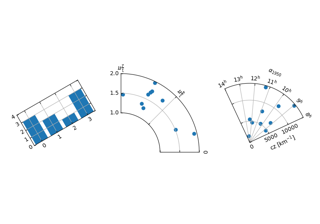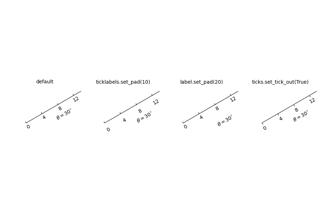mpl_toolkits.axisartist.grid_finder.MaxNLocator#
- class mpl_toolkits.axisartist.grid_finder.MaxNLocator(nbins=10, steps=None, trim=True, integer=False, symmetric=False, prune=None)[source]#
Bases:
MaxNLocator- Parameters:
- nbinsint or 'auto', default: 10
Maximum number of intervals; one less than max number of ticks. If the string 'auto', the number of bins will be automatically determined based on the length of the axis.
- stepsarray-like, optional
Sequence of acceptable tick multiples, starting with 1 and ending with 10. For example, if
steps=[1, 2, 4, 5, 10],20, 40, 60or0.4, 0.6, 0.8would be possible sets of ticks because they are multiples of 2.30, 60, 90would not be generated because 3 does not appear in this example list of steps.- integerbool, default: False
If True, ticks will take only integer values, provided at least min_n_ticks integers are found within the view limits.
- symmetricbool, default: False
If True, autoscaling will result in a range symmetric about zero.
- prune{'lower', 'upper', 'both', None}, default: None
Remove the 'lower' tick, the 'upper' tick, or ticks on 'both' sides if they fall exactly on an axis' edge (this typically occurs when
rcParams["axes.autolimit_mode"](default:'data') is 'round_numbers'). Removing such ticks is mostly useful for stacked or ganged plots, where the upper tick of an Axes overlaps with the lower tick of the axes above it.- min_n_ticksint, default: 2
Relax nbins and integer constraints if necessary to obtain this minimum number of ticks.



